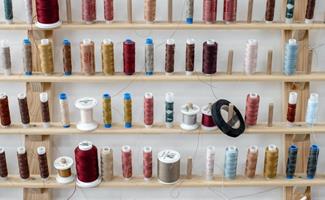Most young consumers in 2022 love to buy clothes from retailers like H&M, Zara, and Forever 21. These are cheap, fast-fashion shops that are usually up to date with the latest fashion trends and allow young people to dress on trend without the high-fashion prices.
However, shopping at these stores does have its downside. Environmentalists are trying to bring awareness about the environmental impact credited to the fast fashion movement. As per a recent UN Environment Programme report, the fast fashion industry contributes to 8-10% of global carbon emissions and is the second biggest consumer of water.
But what is fast fashion in the first place? Why should you be aware of the ecological impact of fast fashion as an aspiring fashion designer and buyer?
What is fast fashion?
Fast fashion refers to clothes and outfits that are produced cheaply and sold at affordable prices. They usually have very short production cycles and get pumped through stores much faster than regular items to keep up with and profit off current trends and the latest catwalk styles.
The fast-fashion model involves huge infrastructure in terms of coming up with designs, production and distribution as well as marketing. This allows retailers to offer greater quantities and varieties, and you get diverse products at low prices.
The term was first coined by the New York Times in the early 1990s to describe Zara’s mission to bring its latest designs to the public within 15 days.
Does the fast fashion industry have a severe environmental impact?
Once hailed as the ultimate solution to bring fashion within reach of common people, the fast fashion industry has been facing a lot of scrutiny in recent years. A lot of pressure is being put on the fast fashion industry from concerned environmentalists and protection groups who are rightly worried about fast fashion’s environmental impact.
For example, a Business Insider report found that fast fashion production is a significant cause of rivers drying up and water streams getting polluted. The same report found that washing these clothes releases around 500,000 tons of microfibers into the water—equivalent to 50 billion plastic bottles.
According to another report by Quantis International, the three main drivers of the fast fashion industry’s pollution impact include:
- Fibre production – 15%
- Yarn preparation – 28%
- Dyeing and finishing – 36%
A few significant ecological downsides of the fast fashion industry include:
- Incessant waste of water and pollution of water resources.
- The alarming rise in the use of microplastics in clothes production.
- Intense pressure on the energy industry because the production process is energy intensive.
- The use of low paid or unpaid workers and child labour that is used in some sectors of the fast fashion industry.
If steps aren’t taken to prevent further environmental damage soon, there might not be a planet left for people to inhabit. This hard truth has been proven by yet another report by the UN Framework Convention on Climate Change, which estimated that the emissions from fast fashion textiles could increase by 60% by 2030.
What can those working in fashion do to contribute to ecological preservation?
There’re plenty of ways in which environment-forward fashion houses and designers can do their bit to slow down the impact of the fashion industry. In recent times, there have been talks of slow fashion as an alternative to fast fashion.
The argument is that slow fashion can hit the brakes on the mindless consumption being propagated by the fast fashion industry and advocate for manufacturing practices that respect local cultures and the environment. Another notable slow fashion trend is the rise in popularity of second-hand design houses and fabric sellers like Poshmark and Gwynnie Bee.
Even the infamous fast fashion retailers seem to be doing their bit. Ralph Lauren has committed to using 100% sustainably sourced materials, and H&M uses organic cotton as their base fabric.
Despite such admirable efforts, there’s still a lot to do. The situation can be a lot better if the upcoming crop of fashion retailers and designers consider sustainability as an essential feature of their work.
Many universities and fashion colleges are taking steps to introduce sustainability as an essential subject in fashion design and management courses. This is true for the MA Fashion Business and Management programme at the London College of Contemporary Arts (LCCA).
The master’s in fashion business effectively combines theory with practice and introduces students to a wide range of industry-relevant tutorials and workshops. It also helps students improve creative thinking and strategic management skills within a fashion business setup.
Click here to learn more about this fashion management programme at LCCA.


 Top Instagram accounts that fashion and textile design fans should follow
Top Instagram accounts that fashion and textile design fans should follow  6 Cost-effective tips for Fashion and Textile Design Students
6 Cost-effective tips for Fashion and Textile Design Students  Fashion Photography Tips
Fashion Photography Tips  5 Women who have influenced the fashion world
5 Women who have influenced the fashion world  What kind of fashion trends in London can you expect to dominate in 2022?
What kind of fashion trends in London can you expect to dominate in 2022?